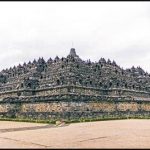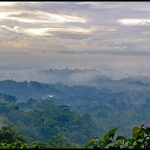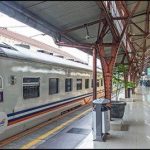Borobudur Temple is a magnificent, spectacular and amazing architecture in the middle of Central Java planes in Indonesia surrounded by the volcanic mountain twins of Mount Merapi-Mount Merabu in the East and Mount Sumbing-Mount Sundoro in the west. The timeless beauty of Java is a grand heritage of Indonesia. When I got the first glimpse of the great temple of Borobudur, I was just awestruck by the sheer grandness of the World’s greatest Buddhist Monument; located in the world’s largest Muslim country Indonesia, far from my Hindu dominating motherland India.
But, Borobudur isn’t the pride of Indonesia only, it is not the symbol of Buddhism only. It doesn’t belong to a country, to a community or to a religion , it belongs to all of us. The monuments like Borobudur Temple is a celebration of civilization, it is a symbol of indomitable courage showed by our predecessors. It was the determination of those people that led to the construction of a priceless beauty in the land of fierce volcanoes, surrounded by the dense forests.
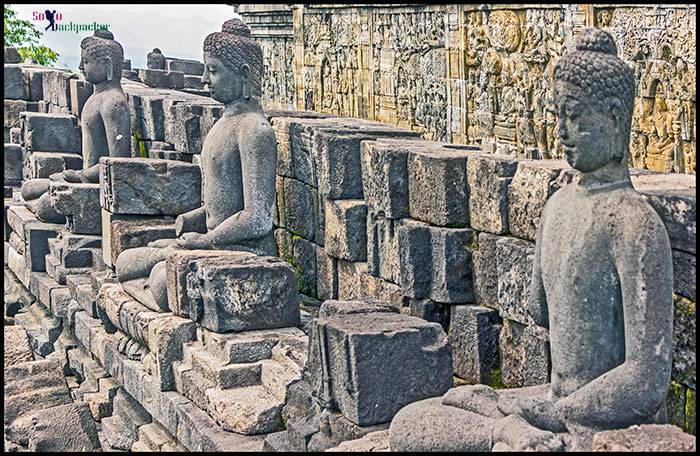
When I reached in front of the Borobudur Temple, a pleasant sensation was running down the spines. The same kind of sensation was there, when I first entered in the vast courtyard of Angkor Wat, or when I stood in front of the Great Pyramid Of Giza. The same sensation is there when I plunged myself into an ocean to explore the unknown or or when I wonder in the heights of the Himalayas. The face to face meeting with Borobudur Temple was a long-cherished dream and that dream just turned into the reality. I was there, in front of a masterpiece- astonished and hypnotized.
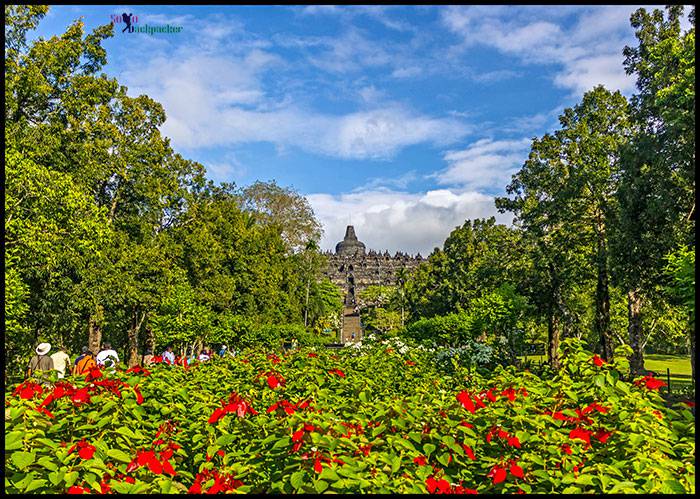
On a path covered by the trees, and decorated by the flowers, I walked slowly towards a mountain of a thousand stones. The stone mountain revealed its shape slowly, very slowly, first the front stairs, then the side walls and then the square and circular platforms with lot of Buddha statues. It was just in front of me, Borobudur Temple, huge, bigger than the imagination, so big that it is quite difficult to capture its grandeur in a single frame.
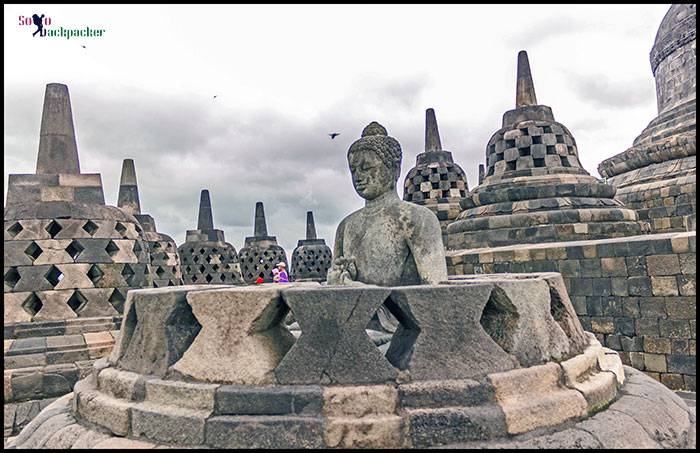
The design of Borobudur Temple is like a step pyramid. One over the other, the temple consists of 9 platforms, six square and three circular, topped by a central dome. I climbed on the stairs, circumnavigated each and every platform of the Borobudur Temple to witness the sheer grandness of the relief panels.
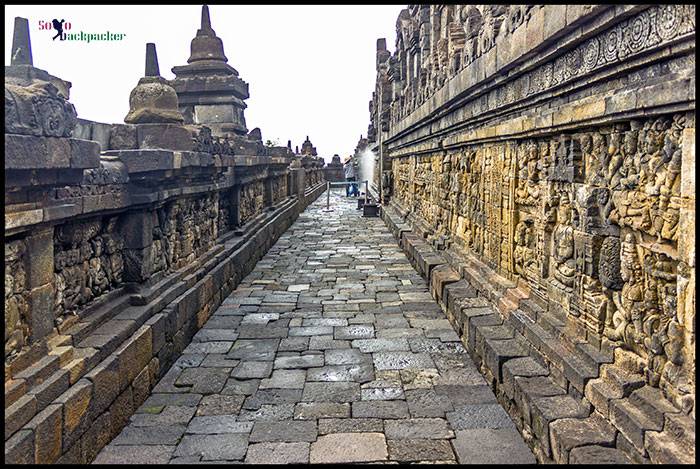
The entire temple complex is decorated with 2672 relief panels. The relief panels of Borobudur Temple depict the teachings of the Buddha, also many stories from the contemporary Java culture. It features the images of temples, markets, kings, queens, princes, priests, hermits, various flora and fauna etc. It is believed that the bas-reliefs of Borobudur Temple was originally quite colourful, before centuries of torrential tropical rainfalls peeled-off the colour pigments. Borobudur has one of the largest and most complete ensembles of Buddhist reliefs in the world.
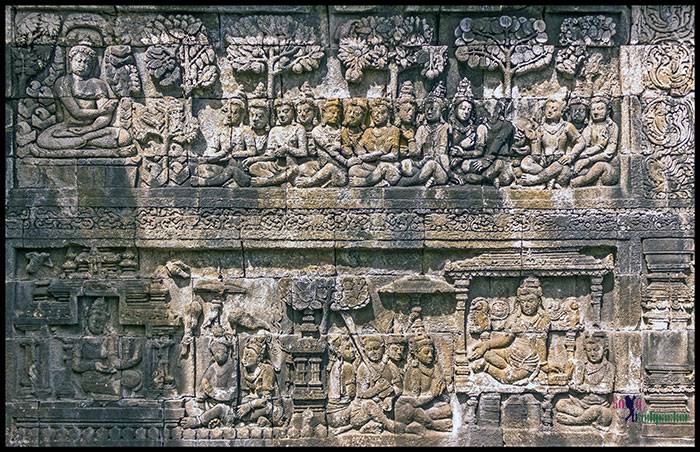
On the upper platforms, the central dome is surrounded by 72 Buddha statues, each seated inside a perforated stupa, 32 stupas at first circular platform, 24 at the second and 16 at the third circular platform. From top to bottom, the temple complex originally had as much as 504 Buddha statues, more than 300 are damaged now, most of them are headless. After rediscovery of the monument in 19th century, number of heads were stolen, few of them are now in museums spread all over the world.
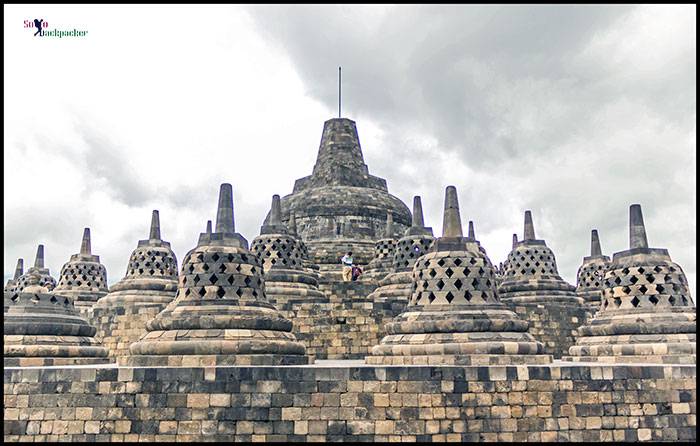
The surrounding view from the top of Borobudur Temple is breathtaking. There are hills peeping out from the cloud covered valleys, lush-green forests and paddy fields all around. From the upper platforms, it is also possible to enjoy the view of the twin volcanic mountains, Mount Merapi and Mount Merabu . But that day, the entire valley was covered with the clouds, so I wasn’t able to see the volcanic mountains.
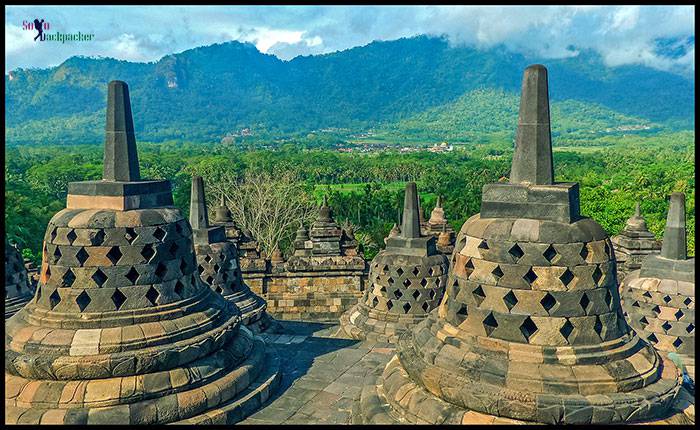
At the base of Borobudur Temple, there is another interesting relief feature known as the hidden foot. The hidden foot of Borobudur Temple consists 160 panels illustrating the various concept of Buddhist religion concerned with the karmik acts. These panels contains the images of the tortures mixed with scenes of sweet pleasure, quite in contrast with the panels of upper platforms. It is hidden by an encasement base, the purpose of which is still a mystery. Some people suggest that the encasement base was created to provide the additional support to the base of the monument, because there was a danger of subsidence to the whole structure. Some believe that there were designing faults in the hidden panels according to the Vastu Shastra. So they were made hidden by an encasement base with detailed and meticulous design.
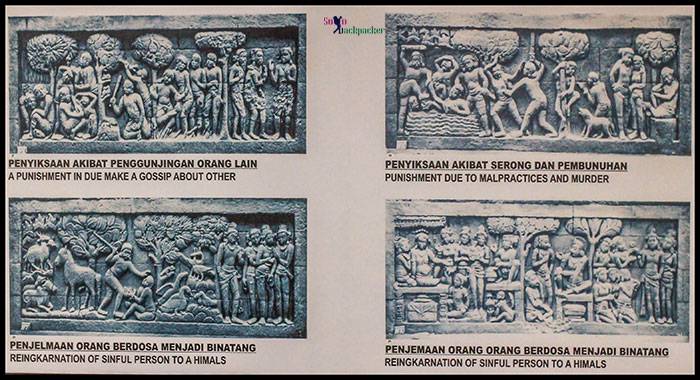
The hidden foot was incidentally discovered in 1890 and all the 160 panels were revealed one by one. Those panels were photographed and later in 1891, the panels were re-covered. When Japan occupied Java in 1940s, the south east corner of the hidden foot was dismantled. The four and a half reliefs in this corner are the only part of the buried base visible even today.
After walking around the temple, I moved to one corner of the temple complex to capture the magnificence of Borobudur in a single shot. But, Borobudur Temple is so huge and so vast that it is almost impossible to capture the whole structure in a single frame.
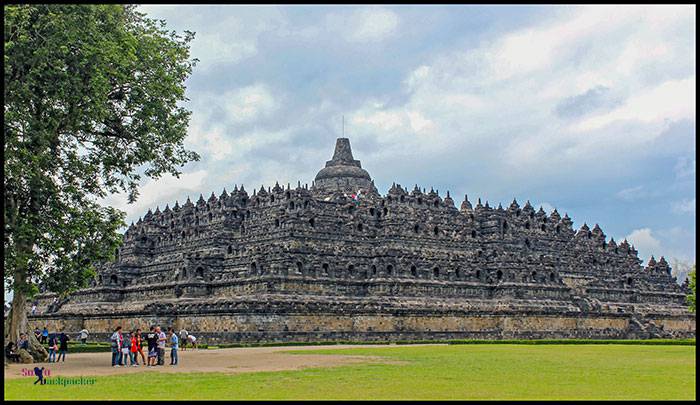
Borobudur Museum: After visiting the main temple, I went to the archaeological museum, located few hundred meters away inside the temple complex only. Borobudur Museum, also known as Karmawibhangga Museum, is itself a huge complex featuring the images of the covered panels carved on the hidden foot of Borobudur, some disassembled Borobudur stones, archaeological artifacts founds around Borobudur and Central Java. The museum also displays the documentation of restoration project conducted between 1975 and 1982 under UNESCO guidance.
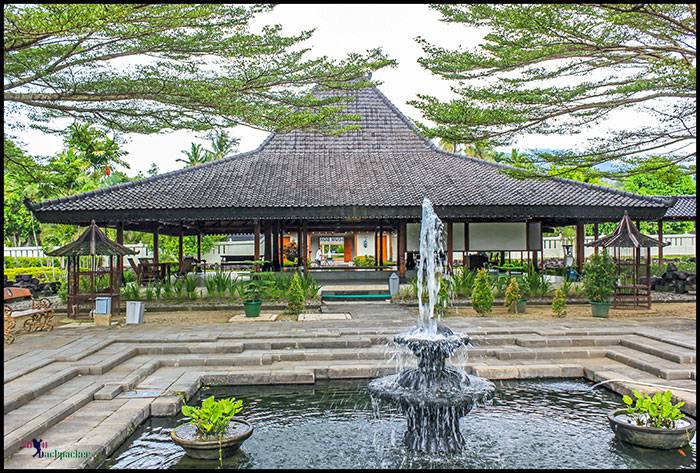
From the museum, I moved towards an Exit signboard. What started from a single signboard turned into a series of Exit signboards one after another through the alleys of shopping stalls. It took me almost 15 minutes to follow those sign-boards and to come out from the temple complex of Borobudur.
Note: 1. While planning a trip to Borobudur, It is advisable to reach the temple complex as early as possible. It you opt for the sunrise tour of Borobudur, then you are supposed to be there by 4.30 AM. But, in case you don’t opt for the sunrise tour or prefer to watch sunrise from the Punthuk Setumbu Hill, then it’s better if you reach the temple complex at earliest once it gets open for the general visitors at 06:00 AM. After reaching temple complex early in the morning, you have advantage to enjoy the magnificence of Borobudur Temple without much crowd. Once the tour buses from Yogyakarta City start arriving at about 08:00 AM, the temple complex becomes crowded with hundreds of visitors all around.
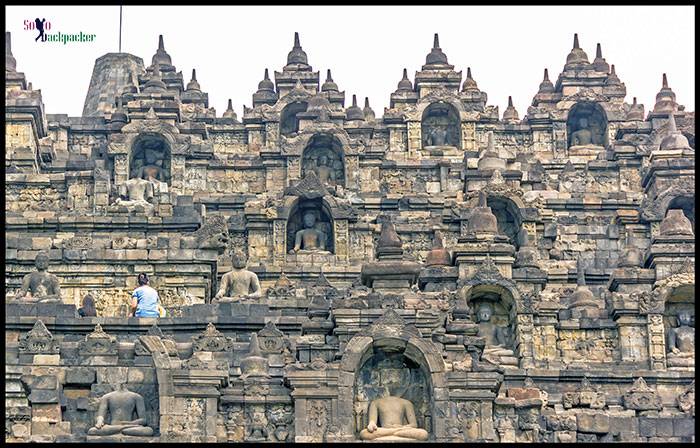
2. From the ticket counter, most of the travellers prefer to reach at the main temple by a pleasant walk through a large open park inside the temple complex. However, there is also a toy train available to shuttle the tourists around the temple, and between the museum and entrance gate after paying IDR 5,000.
History of Borobudur: There is no written record of who built the Borobudur or of its intended purpose. Borobudur was likely founded around 800 CE, during the peak of the Shailendra dynasty in central Java. Like many other admirable places in the world, the story of Borobudur reached to the peak of its glorious past and then lost in the passage of time. After reaching to the peaks of its glory, the Great Pyramids were turned into the sand mounds, the iconic Angkor Wat was swallowed by the growing forests and the magnificent Borobudur was buried underneath the ashes of an active volcano. The temple is believed to have been abandoned in the 14th century after the decline of the Buddhist and Hindu kingdoms in the Java region. Consequently, the mega structure laid hidden for centuries under the layers of volcanic ash and jungle growth.
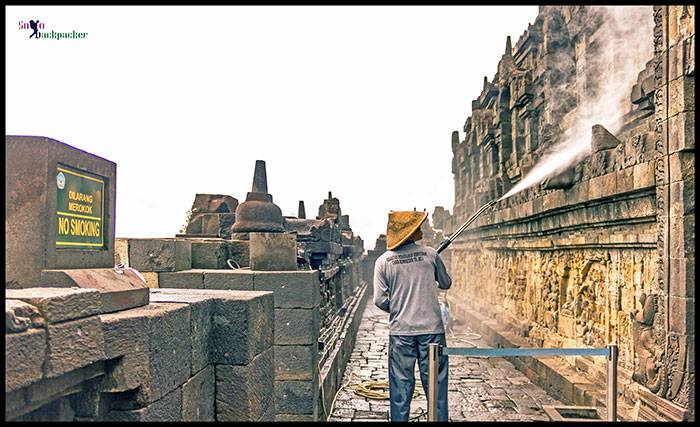
Although Borobudur Temple lost its significance in the dense forests of Central Java due to the rapid expansion of the Islam, but it was always alive in the folklores of native people. In 1814, Sir Thomas Stamford Raffles, a British Officer, followed the trials of those folk stories and rediscovered the site of Borobudur Temple. Due to the danger of collapse, he could not unearth all galleries. Although the discovery was only a fractal portion, Raffles is still credited with the monument’s recovery as one who had brought it to the world’s attention.
Following the discovery, several restorations attempted during 1907 and 1911 by the Dutch colonial. But due to the lack of funding the project then stopped. Later between 1975 and 1982 the site was extensively restored with the help of UNESCO and the Indonesian government. Finally, Borobudur had been restored to its former glory. In 1991, Borobudur was named as a UNESCO World Heritage Site.
Ticket Prices For Borobudur Temple Complex: In 2017, the ticket prices to Borobudur and Prambanan has been increased by 5 USD at least. Latest ticket prices are:
Borobudur Normal Entry: USD 25 ( IDR 325,000) During Public Hours from 06:00 AM to 05:00 PM
Borobudur Entry with Sunrise Tour by Manohara Resort: IDR 450,000 . Sunrise tours start from 04:30 AM . Ticket prices include an entrance to the temple, torch light and snacks at the resort.
Combo Ticket for Borobudur and Prambanan Temple: USD 40 ( IDR 520,000). Not advisable unless you are in too hurry to visit both temples in a single day.
The ticket prices are valid for single entry only. Prices for Indonesian citizens are different. The ticket counters and entrances are separate for the Foreign visitors and the Indonesian citizens. International visitors can pay cash either in USD or in IDR. USD 10 discount is available with International Student Cards and for the children between 3-10 years. This discount is not applicable for sunrise tour prices and for the combo ticket of Borobudur and Prambanan. Earlier, the combo ticket was valid for 48 hours, but now it is valid only for 24 hours, single entry at each temple.
Timings of Borobudur Temple Complex: The temple complex of Borobudur remains open from 06:00 AM to 05:00 PM every day for the general public. The sunrise tour of Manohara Hotel starts from 04:30 AM everyday at extra cost.
How To Reach Borobudur from Yogyakarta by the Public Transport? Located in Magelang, Borobudur is about 40 kms from Yogyakarta, the city having a major airport and a railway station and serving as a gateway to Borobudur. Regular domestic flights are available from all parts of Indonesia to Yogyakarta. International connections are also available from Singapore and Kualalumpur.
The direct public buses known as DAMRI are available from Yogyakarta Airport to Borobudur, however frequency is not reliable. If you are travelling from the airport, it’s better to catch a Damri bus to Magelang or Muntilan and from there a mini van to Borobudur. Direct TransJogja (The Public Bus Network of Yogyakarta) is available from the airport to the city centre starting from 07:00 AM onwards at regular frequency. Take bus 1A from the airport terminal and reach Marliboro. Jalan Malioboro is the main bus stand from where you can catch another bus to Jombor Bus Terminal in Yogyakarta. All public buses to Borobudur side departs from the Jombor Bus Terminal in Yogyakarta City.
Malioboro is approximately 600 meters walking distance form Tugu Railway Station and approx 1.5 kms walking distance from Lempuyangan Railway Station in Yogyakarta. You can either walk from the railway station to the Malioboro bus stand of Trans Jogja or simply take a Three-wheeled pedal-powered trishaws or pedicabs, known as becak. From Malioboro take bus number 2A to Jombor Bus Terminal.
The total travel time from Yogyakarta to Borobudur is approx 2 hours by the public transport. Although, Transjogja buses operate from 05:30 AM to 09:30 PM, it’s better to reach early at Jombor terminal to get a bus for Borobudur. During my trip, I reached there at 04:00 PM and no direct bus was available for Borobudur. I caught another public bus to Muntilan and then hired a taxi from Muntilan to Borobudur. The fare from TransJogja bus is flat 3600 IDR irrespective of the distances and you can change buses at the bus shelter to catch another connecting bus.
Where To Stay At Borobudur? Borobudur has wide variety of accommodation options catering to high-end as well as budget travellers. These two properties have distinct advantages worth-mentioning:
1. Manohara Resort: Very popular among the visitors, the Manohara Resort is located inside the Borobudur Park and run by the park administration. Approx 200 meters away from the main temple, its prices include breakfast and standard entry to Borobudur for two. Standard entry means the entry to Borobudur Temple, once the sunrise tours are over. The sunrise tour prices are separate and the tickets are available at Manohara Resort desk. This is the best option to gain entry to the temple early morning before the masses arrive.
2. Pondok Tingal: Approx one km away from the entrance of Borobudur Park, on the main road only, this is a big and beautiful property with wide variety of room options. The best part of this property is the Dormitory option, that can be booked only at the cost of 30,000 IDR per night per person. A very cheap option for the budget travellers, right in the heart of Borobudur. Dormitory is neat and clean with shared bathrooms outside. 6 beds are available in a single room dormitory and it can be used by both male and female travellers.


